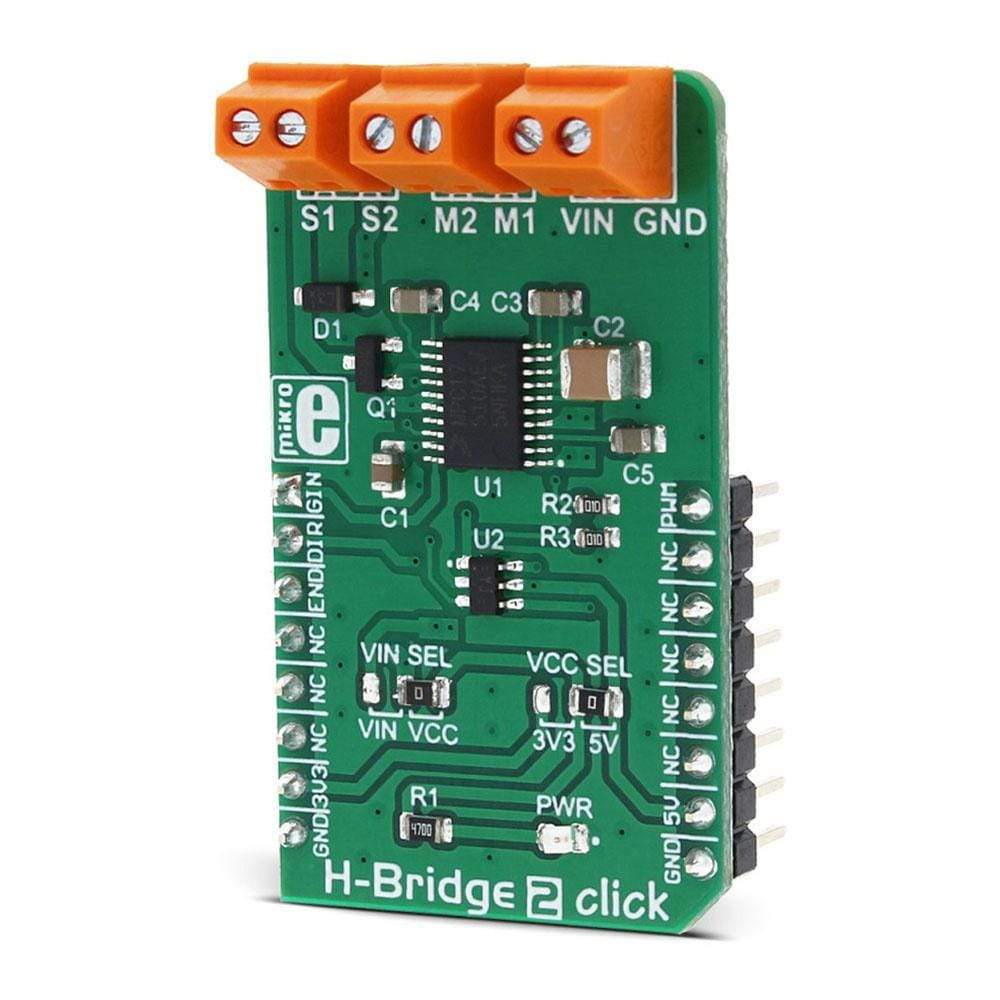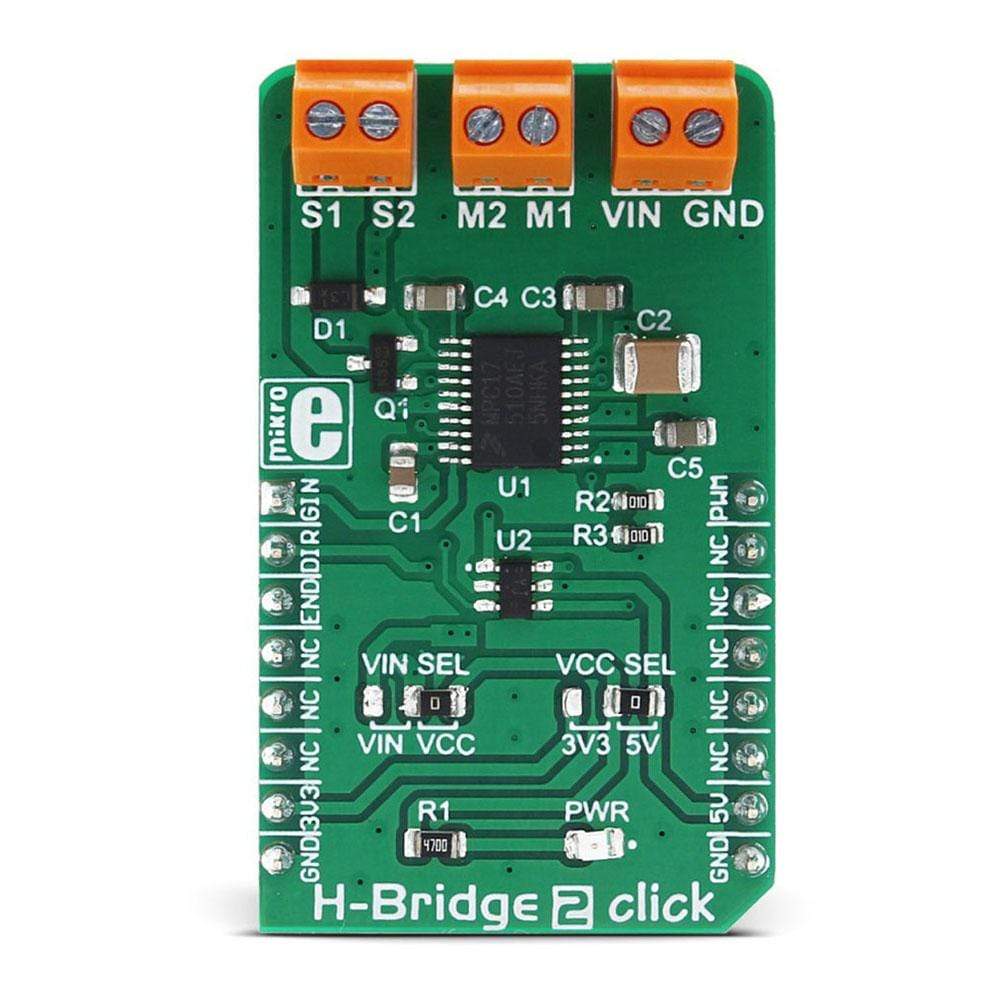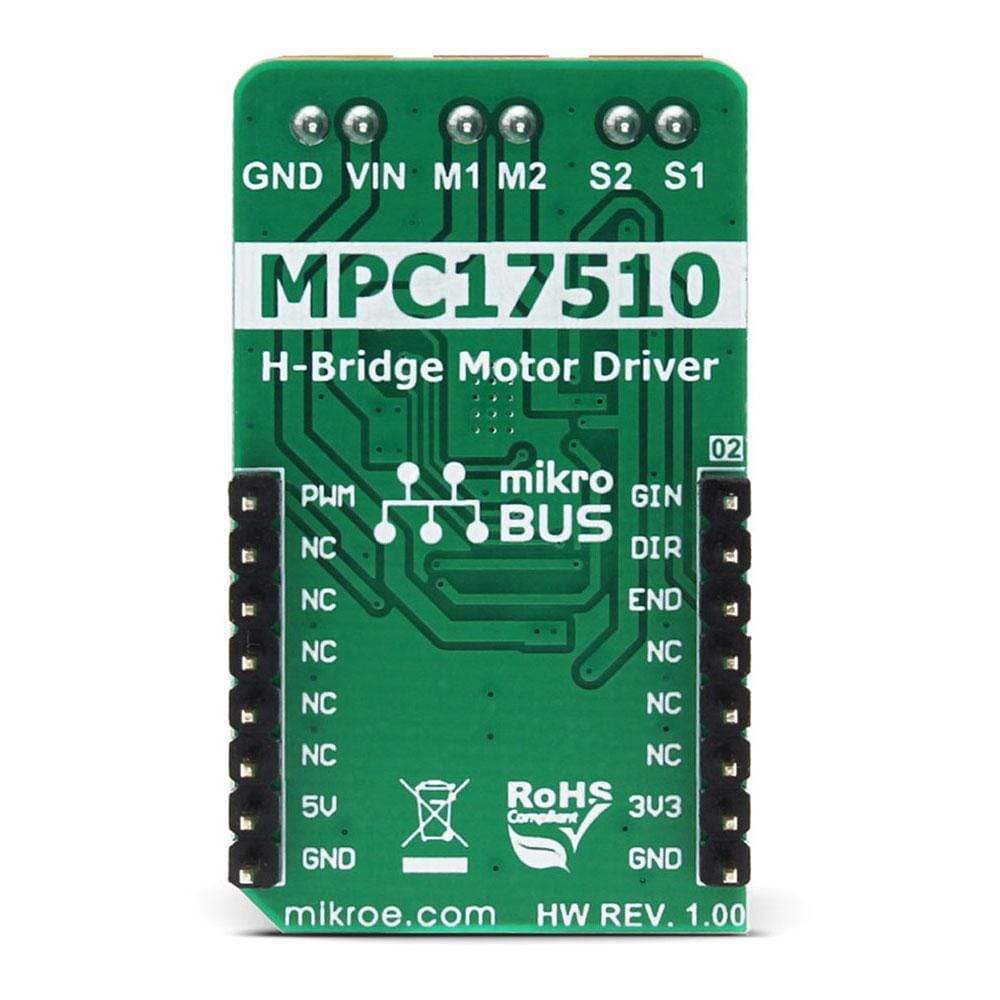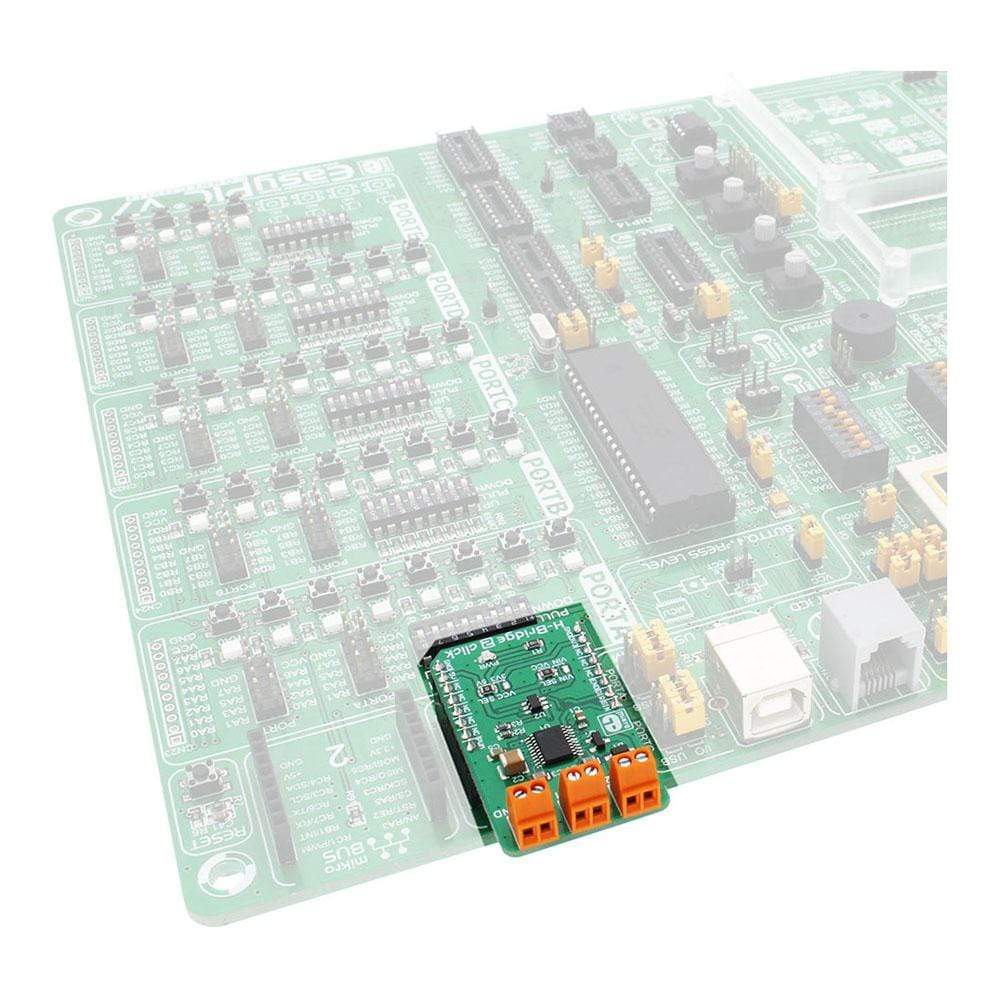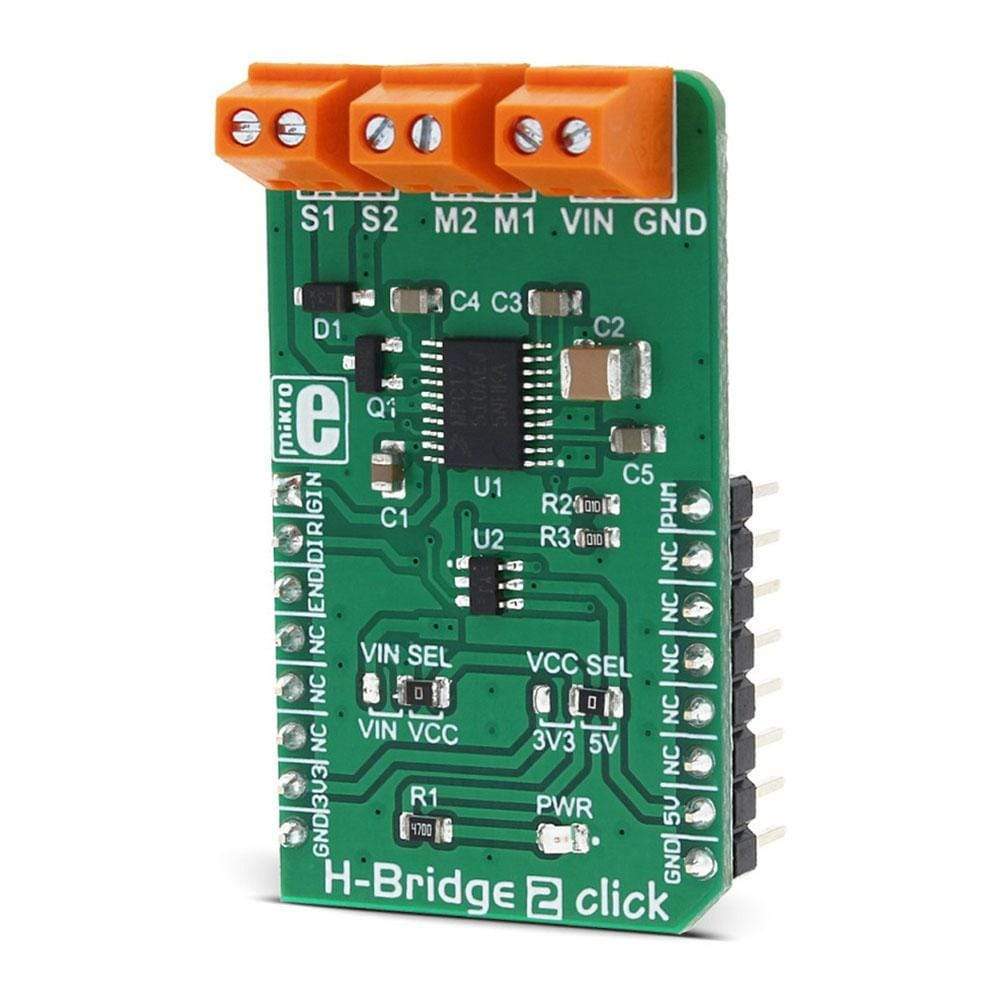
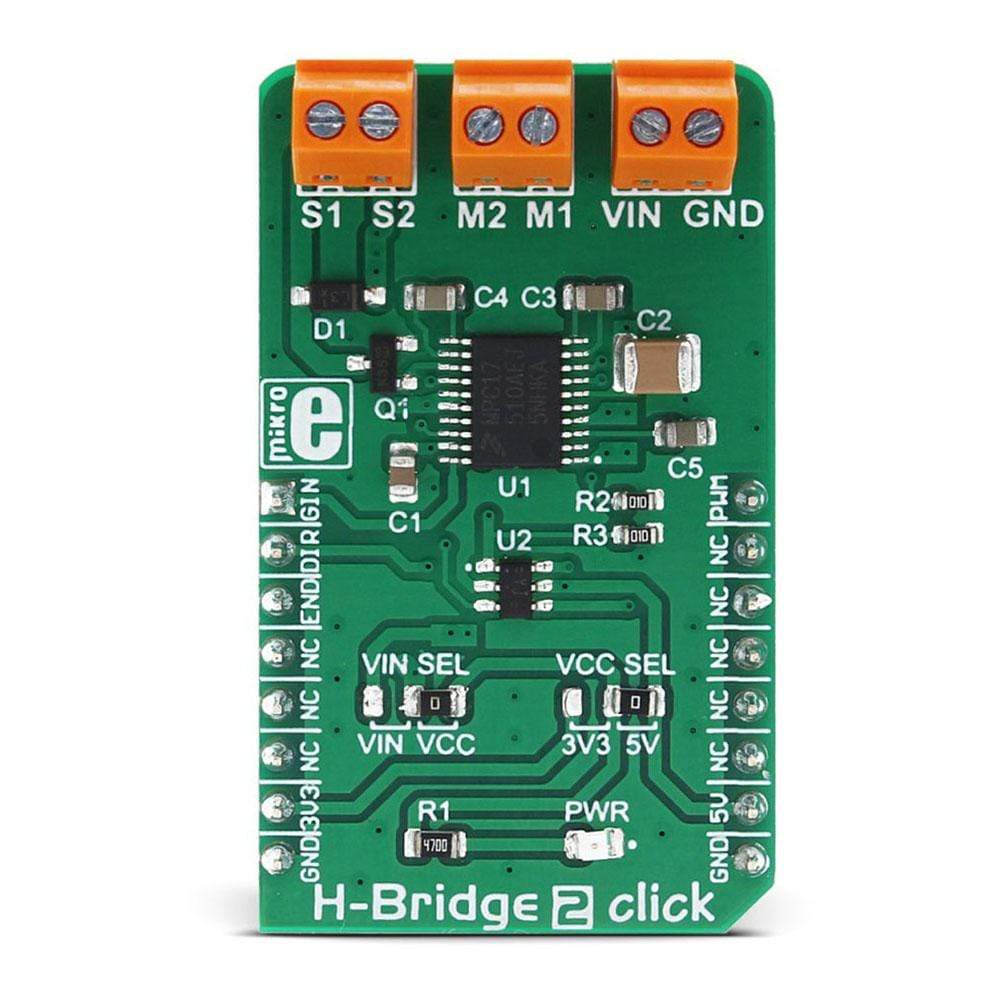
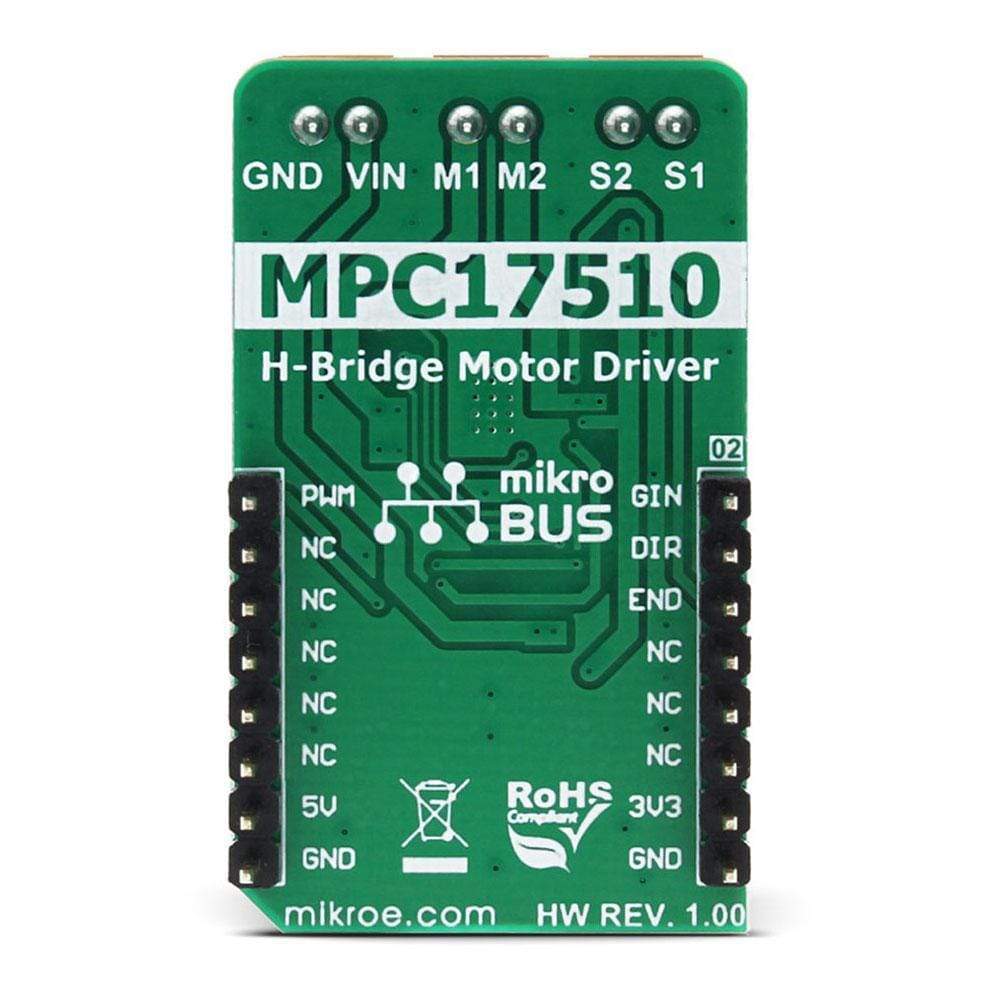
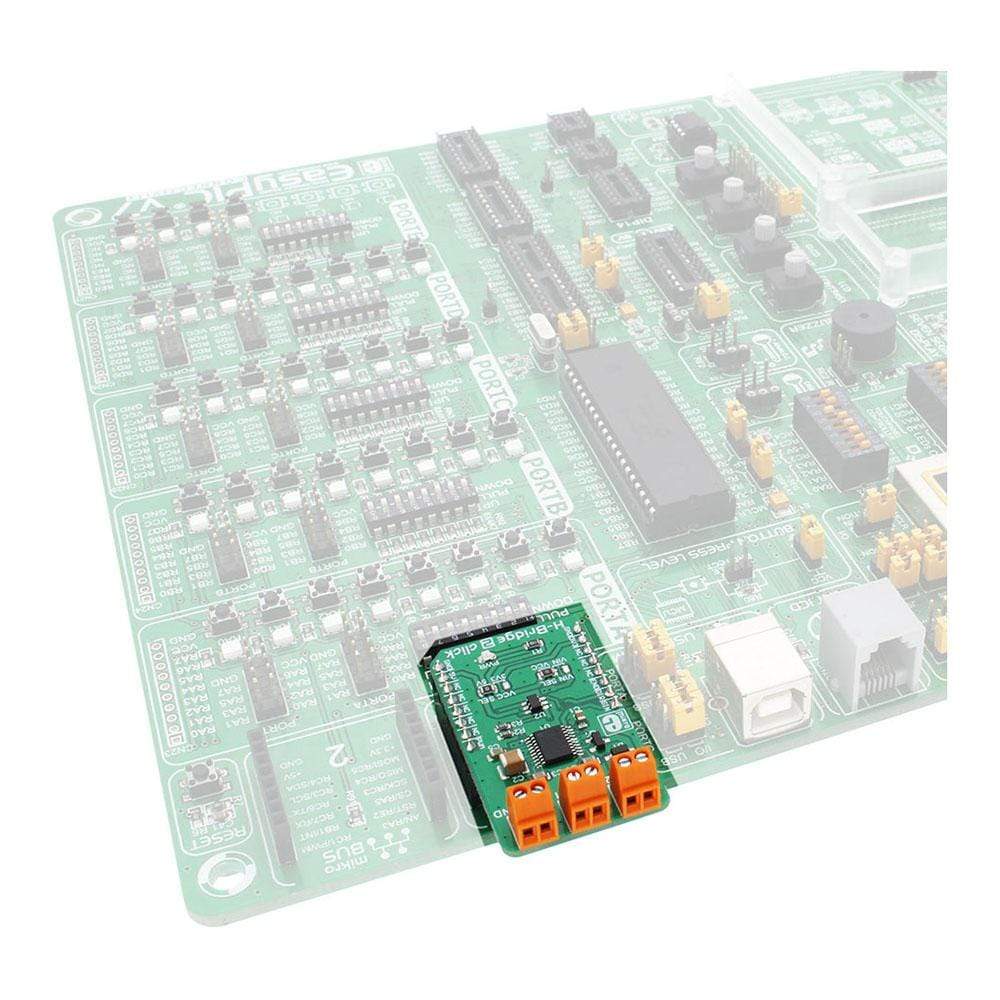
Overview
The H-Bridge 2 Click Board™ can be used to drive a motor by utilizing a specific configuration of the output stage MOSFETs, known as the H-bridge. This configuration enables H-Bridge 2 Click Board™ to drive a motor with up to 1.2A and 15V, providing control of the speed and direction, as well as the dynamic (rheostatic) braking capability.
The H-Bridge 2 Click Board™ uses a monolithic H-bridge IC, which implements a set of features that provide trouble-free operation of the connected motor, such as the under voltage detection, shoot-through current protection, efficient output stage MOSFETs with low RDSON, level-shifted output for an external MOSFET control and more.
Downloads
Das H-Bridge 2 Click Board™ kann zum Antrieb eines Motors verwendet werden, indem eine spezielle Konfiguration der Ausgangsstufen-MOSFETs, die sogenannte H-Brücke, verwendet wird. Diese Konfiguration ermöglicht es dem H-Bridge 2 Click Board™, einen Motor mit bis zu 1,2 A und 15 V anzutreiben und ermöglicht die Steuerung der Geschwindigkeit und Richtung sowie die dynamische (rheostatische) Bremsfähigkeit.
Das H-Bridge 2 Click Board™ verwendet einen monolithischen H-Brücken-IC, der eine Reihe von Funktionen implementiert, die einen störungsfreien Betrieb des angeschlossenen Motors gewährleisten, wie z. B. Unterspannungserkennung, Durchschussstromschutz, effiziente Ausgangsstufen-MOSFETs mit niedrigem RDSON, pegelverschobener Ausgang für eine externe MOSFET-Steuerung und mehr.
| General Information | |
|---|---|
Part Number (SKU) |
MIKROE-3000
|
Manufacturer |
|
| Physical and Mechanical | |
Weight |
0.02 kg
|
| Other | |
Country of Origin |
|
HS Code Customs Tariff code
|
|
EAN |
8606018712915
|
Warranty |
|
Frequently Asked Questions
Have a Question?
Be the first to ask a question about this.

